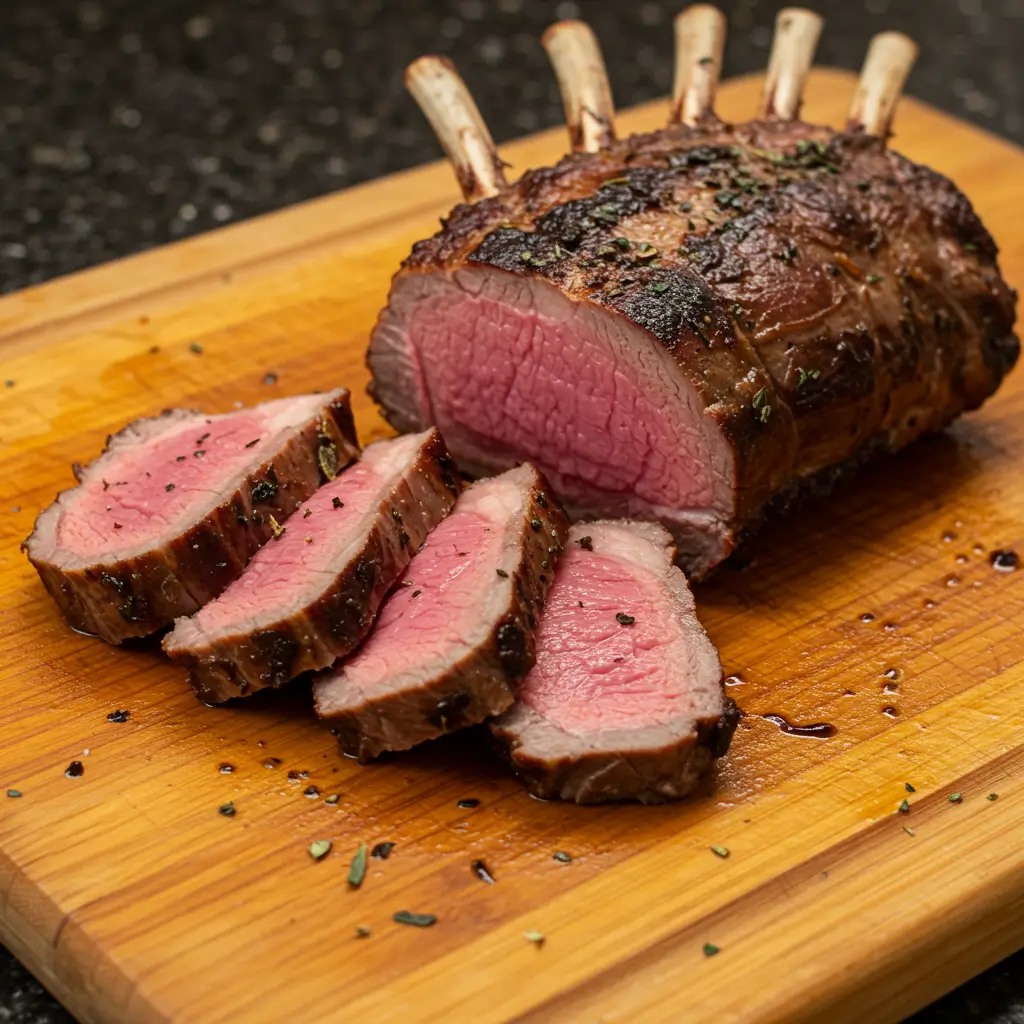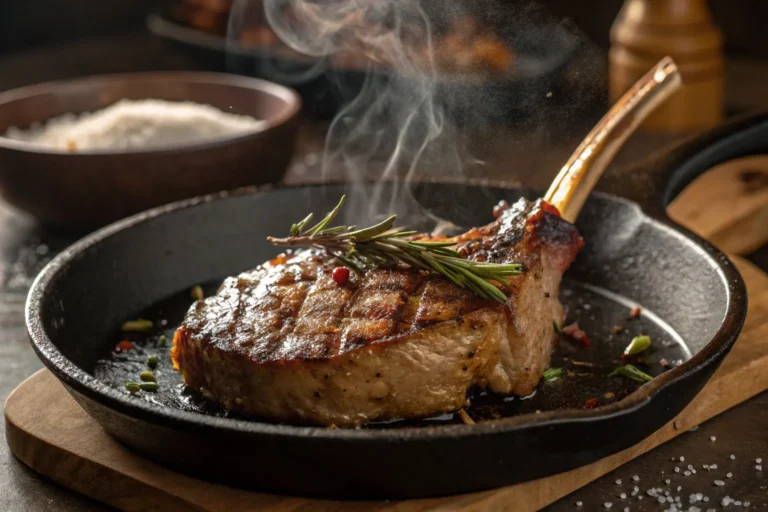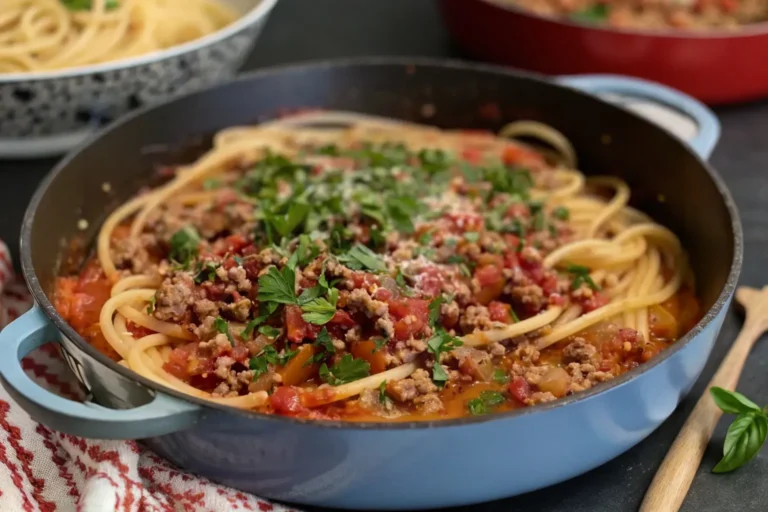Is Lamb Safe to Eat Medium Rare? Your Complete Guide to Juicy, Pink Perfection
Have you ever stared at a beautiful rack of lamb in your kitchen and wondered, “Can you eat lamb medium rare?” I certainly have! As a busy mom juggling soccer practices and work deadlines, I’ve often second-guessed myself when it comes to serving pink lamb to my family. Let me tell you, friends, that perfectly rosy center isn’t just safe it’s where lamb truly shines in all its flavor glory!
Today, I’m walking you through everything you need to know about enjoying lamb at its juicy, tender best without any food safety worries. Whether you’re planning a special date night dinner or looking to elevate your Sunday family meal, this guide will answer the question “can you eat lamb medium rare?” and give you the confidence to cook lamb to pink perfection every time.
Table of Contents
The Story Behind Medium Rare Lamb
The tradition of serving lamb with a pink center dates back centuries in many cultures, particularly in Middle Eastern and Mediterranean cuisines where lamb is central to culinary identity. According to food historians at the James Beard Foundation, lamb cookery evolved differently from beef because of the animal’s different muscle structure and fat distribution.
Can You Eat Lamb Medium Rare Safely?
Here’s the good news that might surprise you when asking “can you eat lamb medium rare?”: lamb is generally safer to eat medium rare than many other meats. Unlike ground beef, which can harbor bacteria throughout the meat, whole cuts of lamb typically only have potential bacteria on the outside surfaces which are quickly killed during the searing process.
According to the USDA Food Safety and Inspection Service, whole muscle cuts of lamb can be safely consumed at lower internal temperatures than ground meats. The key is ensuring proper handling before cooking and reaching the correct minimum internal temperature.
Essential Temperature Guide for Lamb Doneness
When it comes to the question “can you eat lamb medium rare?”, your meat thermometer becomes your best friend. I never cook lamb medium rare without mine anymore it’s truly the difference between a good meal and a great one.
Lamb Cooking Temperatures and Doneness Chart
| Doneness | Remove from Heat | Final Temperature After Resting | Appearance |
|---|---|---|---|
| Rare | 115-120°F (46-49°C) | 125°F (52°C) | Very red, cool center |
| Medium Rare | 120-125°F (49-52°C) | 130-135°F (54-57°C) | Pink-red, warm center |
| Medium | 130-135°F (54-57°C) | 140-145°F (60-63°C) | Pink center, firmer |
| Medium Well | 140-145°F (60-63°C) | 150-155°F (65-68°C) | Slight pink center |
| Well Done | 150-155°F (65-68°C) | 160°F+ (71°C+) | No pink, firm throughout |
Remember that carry-over cooking is real—lamb’s internal temperature will rise about 5-10°F while resting. This is why I always pull my lamb off the heat at 125°F when aiming for that perfect medium rare finish at 130-135°F.
Best Lamb Cuts to Enjoy Medium Rare
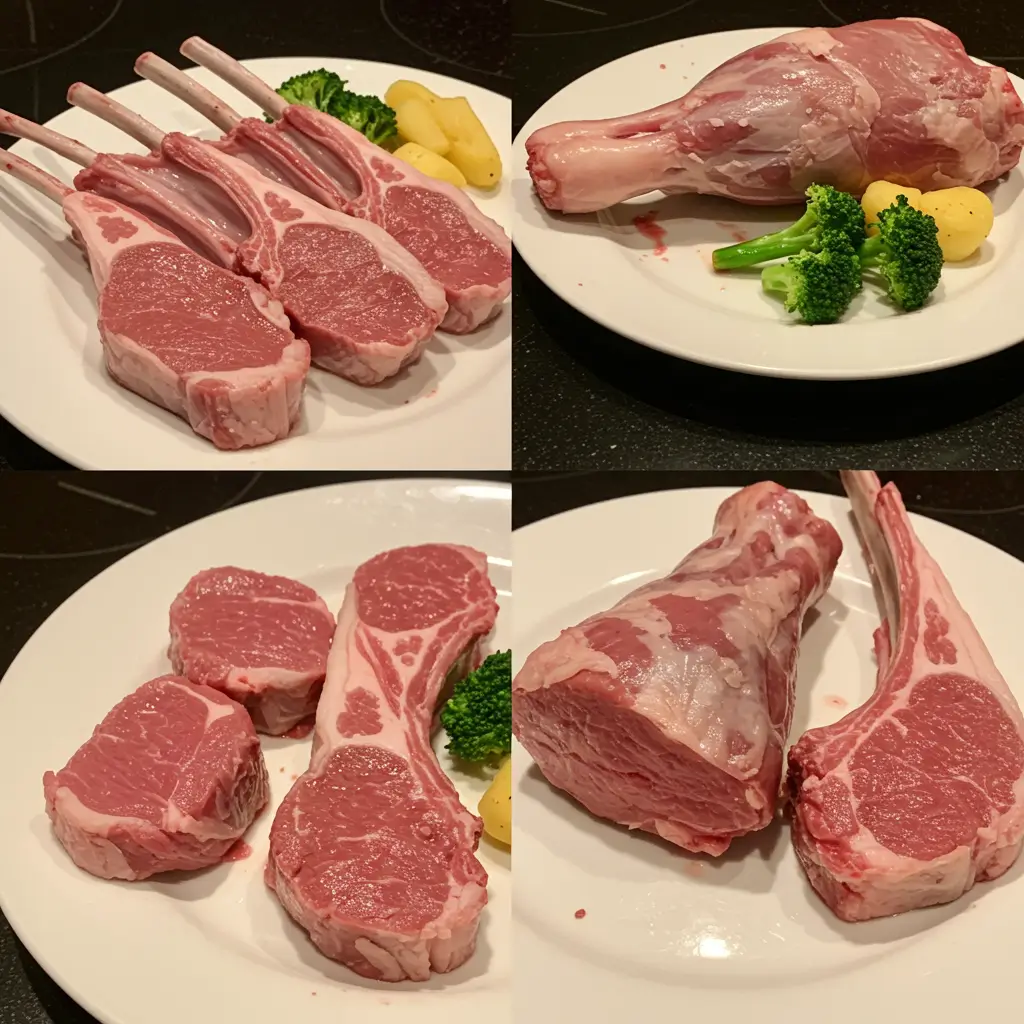
Not all lamb cuts are created equal when answering “can you eat lamb medium rare?” Here are my tried-and-true favorites for medium rare preparation:
Rack of Lamb
This is the crown jewel for medium rare cooking. The tender meat with that beautiful fat cap creates a stunning presentation that always wows guests at my dinner parties. I love how the bones act as a built-in temperature buffer, helping the meat cook evenly.
Lamb Loin Chops
Think of these as lamb’s version of a T-bone steak. They’re perfect for quick cooking and are ideal for busy weeknights when you want something special but don’t have hours to spend in the kitchen. My kids call these “lamb lollipops” and actually get excited when they appear on the dinner table!
Leg of Lamb (Boneless or Butterflied)
While traditionally roasted, a butterflied leg cooks beautifully to medium rare on the grill. The varied thickness means everyone can find their perfect doneness—thinner ends for those who prefer it more done, and the center for medium rare enthusiasts like me.
Lamb Sirloin
This underrated cut has become my weeknight secret weapon. It’s tender, flavorful, and cooks quickly to a beautiful medium rare. Plus, it’s usually more affordable than rack or loin chops!
Lamb Cuts to Avoid Eating Rare
While many cuts shine at medium rare, some lamb cuts should be cooked longer for both safety and palatability:
Ground Lamb
Just like ground beef, ground lamb should always be cooked to 160°F (71°C). The grinding process can spread surface bacteria throughout the meat, making medium rare unsafe. Save your pink preferences for whole muscle cuts!
Lamb Shoulder
This hardworking muscle benefits from low, slow cooking methods like braising. While technically safe at medium rare, the connective tissue hasn’t had time to break down, resulting in a tough, chewy experience. Trust me, patience pays off with this cut!
Lamb Shanks
Similar to shoulder, lamb shanks need time for the collagen to melt into gelatin, creating that fall-off-the-bone tenderness we all love. This is where your slow cooker or Dutch oven creates magic that quick cooking simply can’t match.
Who Should Skip Medium Rare Lamb?
While medium rare lamb is safe for most healthy adults, certain groups should opt for more thoroughly cooked meat:
- Pregnant women
- Children under 5
- Adults over 65
- Anyone with a compromised immune system
- Those with chronic illnesses
I always cook lamb to medium or medium-well when my mom visits since her doctor advised her to avoid undercooked meats after her cancer treatment. Remember, being a good host means considering everyone’s dietary needs!
How I Safely Prepare Medium Rare Lamb
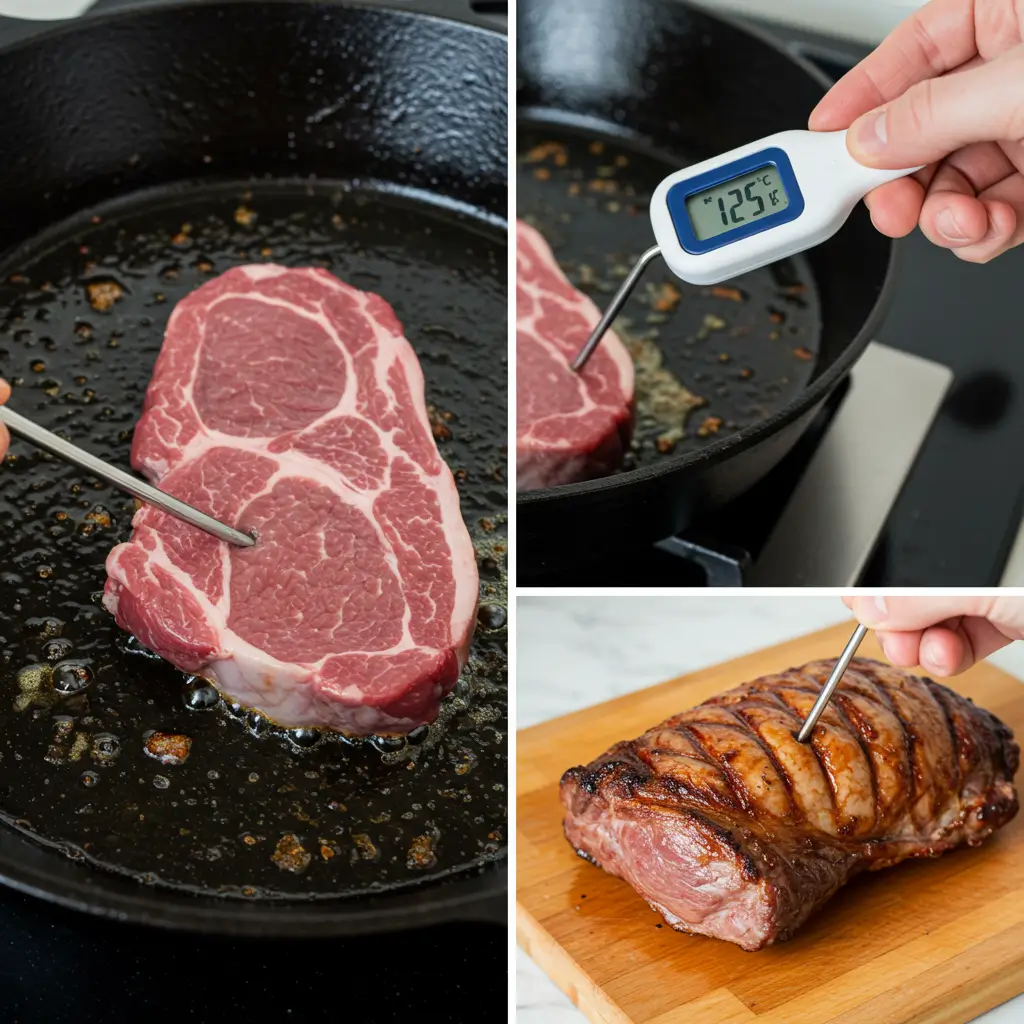
After years of trial and error answering “can you eat lamb medium rare?” (and yes, a few disappointments along the way), here’s my foolproof method for perfect medium rare lamb every time:
- If frozen, defrost the meat safely in the refrigerator overnight in its original packaging. Never use the countertop for thawing I learned this lesson from CDC’s food safety guidelines.
- Take the lamb out of refrigerator for 1 hour before cooking, keeping the meat covered at all times. This helps it cook more evenly.
- Always wash and clean your hands before prep. Use a clean chopping board and knife. Cross-contamination is the enemy of food safety!
- Preheat your pan or grill on medium-high heat. I like my cast iron skillet for smaller cuts and the grill for larger pieces.
- Season generously with salt and pepper. Sometimes I add fresh rosemary and garlic for that classic lamb pairing.
- Ensure you get a thorough sear on all sides of the lamb to kill surface bacteria. This step is non-negotiable for safety!
- Use a meat thermometer to check for doneness. I insert it into the thickest part without touching bone.
- Remove from heat once the temperature reaches 120-125°F (50°C) for medium rare.
- Let it rest for at least five minutes tented loosely with foil. This allows the juices to redistribute and the temperature to rise to the perfect 130-135°F.
The first time I nailed this technique, my husband declared it better than our favorite restaurant’s lamb chops. Talk about a confidence boost in the kitchen!
Perfect Pairings for Medium Rare Lamb
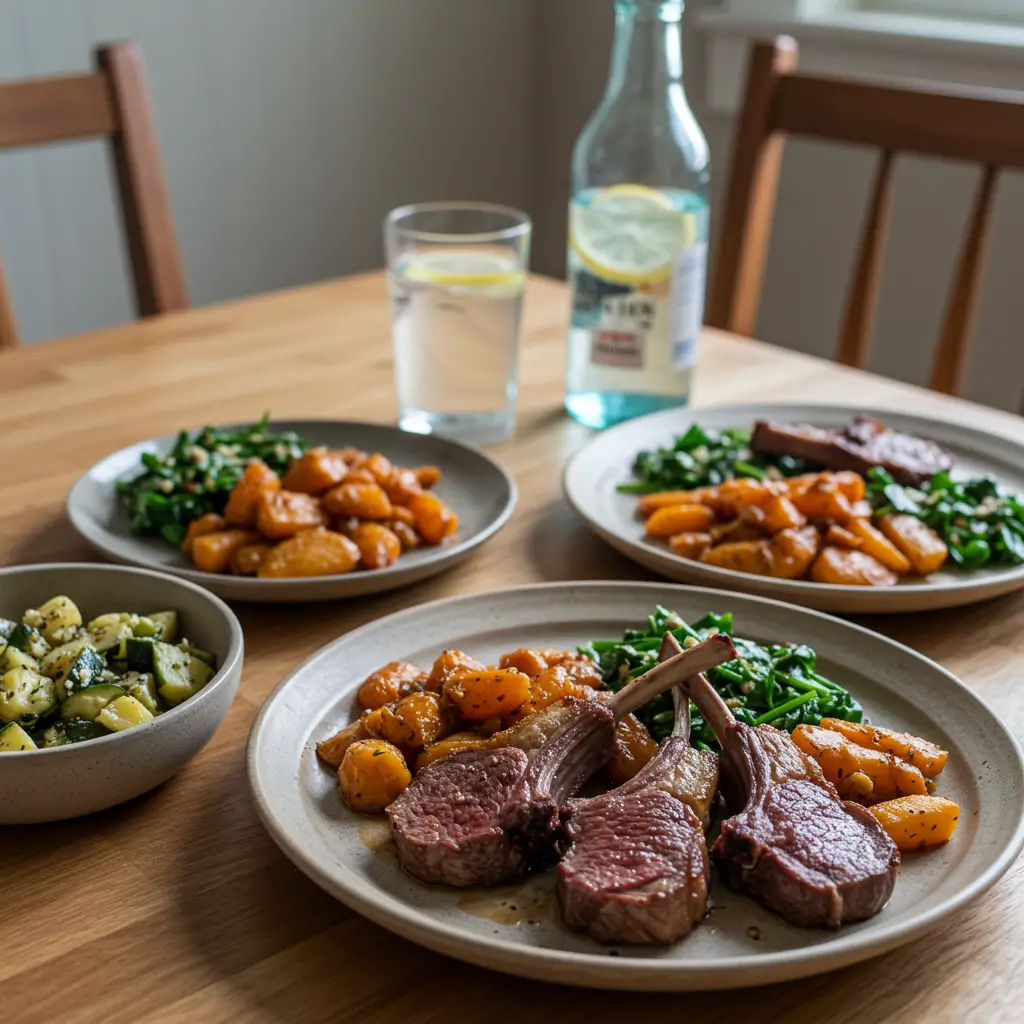
Medium rare lamb has such a beautiful flavor that you don’t want to overwhelm it. Here are my favorite accompaniments:
Side Dishes
- Street Corn Chicken Rice Bowl – The creamy texture complements the tender lamb beautifully
- Mediterranean Quinoa Salad – Light, fresh, and adds a nice textural contrast
- Simple roasted vegetables with herbs – Let the lamb remain the star
Beverage Pairings
- Non-alcoholic: Pomegranate juice spritzer with fresh mint makes a sophisticated alcohol-free pairing
- For the kids: My children love sparkling apple cider served in fancy glasses when we have “special” dinners
How to Store Lamb When You Eat it Medium Rare
Medium rare lamb deserves special handling after cooking, too. Here’s how I manage leftovers:
- Cool leftover lamb quickly and refrigerate within one hour of cooking
- Store in airtight containers for up to 3 days
- Reheat gently to avoid overcooking – I use a low oven (275°F) until just warmed through
- For meal prep, I often cook extra lamb chops, then slice the leftovers thinly for amazing salads or grain bowls the next day
Remember, reheated lamb will cook further, so medium rare will become closer to medium when reheated. If you’re planning leftovers intentionally, you might consider cooking the original cut a bit rarer than you normally would.
But What About Raw Lamb? Is Lamb Tartare Safe?
While beef tartare might be a gourmet restaurant staple, lamb tartare is much less common—and for good reason. Raw lamb carries a higher risk of parasites than beef, making it generally unsuitable for raw consumption.
Some high-end restaurants do offer lamb tartare, but they source specially handled meat and follow extremely rigorous safety protocols. This isn’t something I’d recommend trying at home, no matter how fresh your lamb appears.
If you’re feeling adventurous, leave raw preparations to the professionals and enjoy your homemade lamb at a safe medium rare instead!
Nutrition Information for Medium Rare Lamb
Lamb isn’t just delicious,! it’s nutritionally dense too. Here’s what you’re getting in each serving of medium rare lamb loin chop (about 3 oz/85g):
| Nutrient | Amount |
|---|---|
| Calories | 250 |
| Protein | 21g |
| Carbohydrates | 0g |
| Fat | 18g |
| Iron | 1.8mg (10% DV) |
| Zinc | 4.5mg (30% DV) |
| Vitamin B12 | 2.2mcg (36% DV) |
Dietary Considerations
- Contains Animal Products
- Gluten-Free
- Dairy-Free
- Nut-Free
- Paleo/Keto Compatible
Medium rare lamb makes a perfect protein centerpiece for those following low-carb or paleo diets. The intact nutrients in less-cooked meat also offer excellent bioavailability of iron and B vitamins.
FAQ: Can You Eat Lamb Medium Rare?
Can I cook frozen lamb to medium rare?
While technically possible, I don’t recommend it. Frozen lamb cooks unevenly, making it difficult to achieve that perfect medium rare throughout. Always thaw completely for best results.
How can I tell if my lamb is medium rare without a thermometer?
The finger test works in a pinch: press the meat with your finger—medium rare lamb should feel like the base of your thumb when you touch your thumb and middle finger together. But honestly, a good meat thermometer is worth every penny for consistent results!
Why does my lamb sometimes taste “gamey”?
Domestic American lamb is typically milder than imported lamb. If you’re sensitive to lamb’s distinctive flavor, look for younger American lamb and trim excess fat where many flavor compounds concentrate.
Can I marinate lamb that I plan to cook medium rare?
Absolutely! Just avoid highly acidic marinades for more than 2 hours, as they can affect texture. My go-to marinade is olive oil, garlic, rosemary, and a touch of lemon zest—simple but incredibly effective.
Medium Rare Magic for Your Next Meal
There’s something truly special about cutting into a perfectly cooked piece of lamb and seeing that beautiful pink center. It’s a little victory in the kitchen that never fails to bring a smile to my face—and impressive “oohs” and “aahs” from around the table.
Conclusion
With these temperature guidelines and safety tips in your culinary arsenal, you now have a definitive answer to “can you eat lamb medium rare?” You’re all set to experience lamb at its absolute best. So grab your meat thermometer, pick up some quality lamb, and get ready to savor one of life’s most delicious culinary pleasures!
What’s your favorite cut of lamb to cook at home? I’d love to hear about your medium rare adventures in the comments below!
Did this recipe work for you? We’d love to hear how it turned out!
There are no reviews yet. Be the first one to write one.

